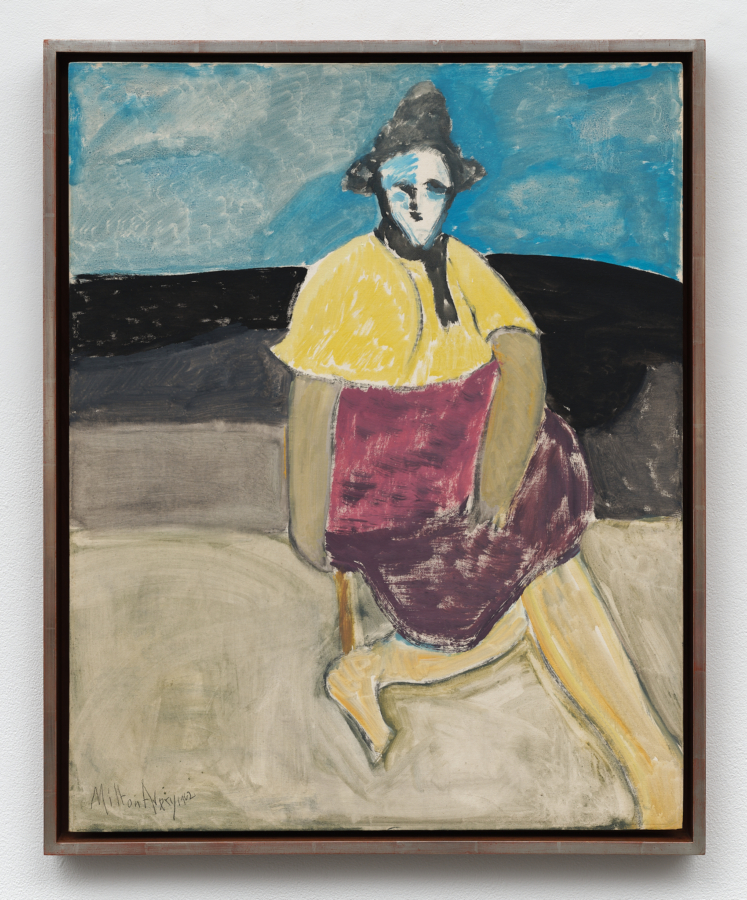
September 3, 2025
In the third paragraph of James Joyce’s Finnegans Wake, the confused, confusing narrator asks, “But waz is?” Joyce succinctly packs “But what’s this?” and “What was is” into three words. Jane Dickson does something similar in Wonder Wheel, making us wonder if, as in Joyce, time may be cyclical or circular rather than linear. She does this by deliberately evoking the art of the past, specifically the art of the Ashcan School. The artistic context in which painters like Robert Henri (1865–1929), George Luks (1867–1933), or William Glackens (1870–1938) depicted street life in New York is made up of conflict. Rather than paint in the elegant, salon style of John Singer Sargent or William Merritt Chase, they chose to paint the here-and-now of the world in which they were living. So, no elegant Madame X (Virginie Amélie Avegno Gautreau) (1883–84) portraits, but instead quick studies of street life, the comings and goings of workers, prostitutes, and street vendors. Implicit in their work is social criticism, and their literary counterparts are a close parallel: novelists such as Stephen Crane, author of Maggie: A Girl of the Streets, chronicled the life of a prostitute, and Theodore Dreiser, whose Sister Carrie shows how a woman sacrifices morality and love to gain success.
Depicting real life had, inevitably, formal consequences. If we look at Luks’s Street Scene (Hester Street) (1905), we see a typical Ashcan School composition: a foreground composed of myriad human bodies, a background of buildings and a street that vanishes to infinity. The action is frontal and theatrical, the scene flattened, and perspective attenuated. Dickson’s snapshot paintings of street carnivals take off from Ashcan School composition, but her work is not an anachronistic recovery of that school; it is a transformation of its formal qualities into something new and strange.
The eleven works assembled at Karma are all painted with oil stick—two on vinyl, nine on linen. The effect in all cases is a mottled, irregular surface with sharp colors (oil stick cannot be mixed into different shades but only covered over). This makes the work acquire the patina of age, as if time had darkened each one. Take Red Spin Cars (2007), for example. The device in question is a whip, a spinning wheel, with the words, “Wonder Wheel” (the show’s title) inscribed above it, with revolving seats attached to it. Dickson finds her point of view by floating it above the machine and tilting the wheel toward the viewer. The simple street fair ride becomes a play of color rather than any attempt to depict “real life.”
Equally dazzling is Baroque Chairoplane (2005–21). Here we have a central tower topped by a dazzling wheel of lights from which seats hang on cables. Dickson shifts perspective here, locating the viewer at a distance from the base of the tower. So, what looks like a nuclear explosion is actually the kind of whirling ride calculated to delight children and make parents ill. The composition, again, defies realism while capturing the kind of bedazzlement all of us have felt at carnivals and amusement parks—spectacular fun shared by a temporary community.
More daring in terms of composition are two “San Gennaro Up in the Air” studies, numbers 3 and 4, both from 2007. In these paintings, which refer to the annual street fair in New York’s Little Italy, Dickson sits us on a Ferris wheel so we can simultaneously experience the machinery and the view from above. The pieces evoke Joseph Stella’s paintings of the Brooklyn Bridge, but where Stella creates a Futurist still life, Dickson inspires the vertigo we experience as the wheel turns and the colors swirl. Again, where her artistic forebearers sought to transform everyday reality into art, Dickson finds a way to make us feel the magic of carnival nightlife by turning banality into unreality. Unlike the Ashcan School, Dickson does not preach, and her work has more to do with fun and delight—perhaps the true value of art—than with teaching us a lesson. Snapshots of a transitory, precarious, artificial world of rides and cotton candy, Dickson’s paintings are a precious chronicle of shared, collective pleasures.



